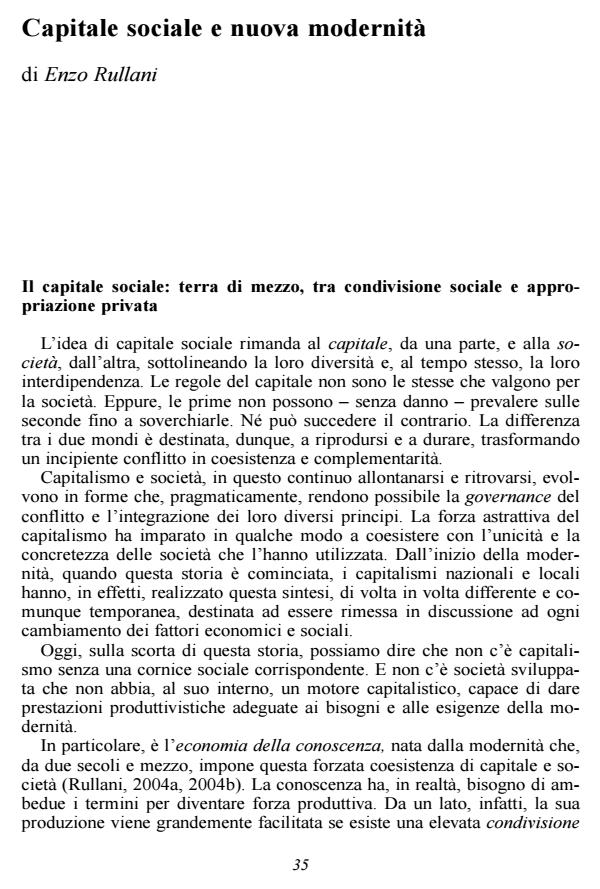Capitale sociale e nuova modernità
Titolo Rivista SOCIOLOGIA DEL LAVORO
Autori/Curatori Enzo Rullani
Anno di pubblicazione 2006 Fascicolo 2006/102 Lingua Italiano
Numero pagine 30 P. Dimensione file 86 KB
DOI
Il DOI è il codice a barre della proprietà intellettuale: per saperne di più
clicca qui
Qui sotto puoi vedere in anteprima la prima pagina di questo articolo.
Se questo articolo ti interessa, lo puoi acquistare (e scaricare in formato pdf) seguendo le facili indicazioni per acquistare il download credit. Acquista Download Credits per scaricare questo Articolo in formato PDF

FrancoAngeli è membro della Publishers International Linking Association, Inc (PILA)associazione indipendente e non profit per facilitare (attraverso i servizi tecnologici implementati da CrossRef.org) l’accesso degli studiosi ai contenuti digitali nelle pubblicazioni professionali e scientifiche
The idea of social capital contains two opposite terms: (private) capital and (public) society. This duality is condemned to remain unsolved in the modern society. In fact, modernity uses knowledge as a productive force, and knowledge needs both these two sides: cognitive property (private rents and investments), on one hand; and social sharing (open access, cognitive reserves), on the other. Hence, social capital is a necessary feature of modern economy. We have utilized social capital in the last 30 year to overcome the crisis of fordist production. Small firms and industrial districts, in Italy, made a deep use of the social capital produced by history and tradition, and embedded in local systems. But today we are facing another problem: how to produce the new social capital that is needed for a post-fordist social organization of production. We are looking for a new form of modernity, suitable for a more complex world. And the social capital, that is to be produced in the future, ought to be designed to fit this more complex economy and society.;
Enzo Rullani, Capitale sociale e nuova modernità in "SOCIOLOGIA DEL LAVORO " 102/2006, pp , DOI: